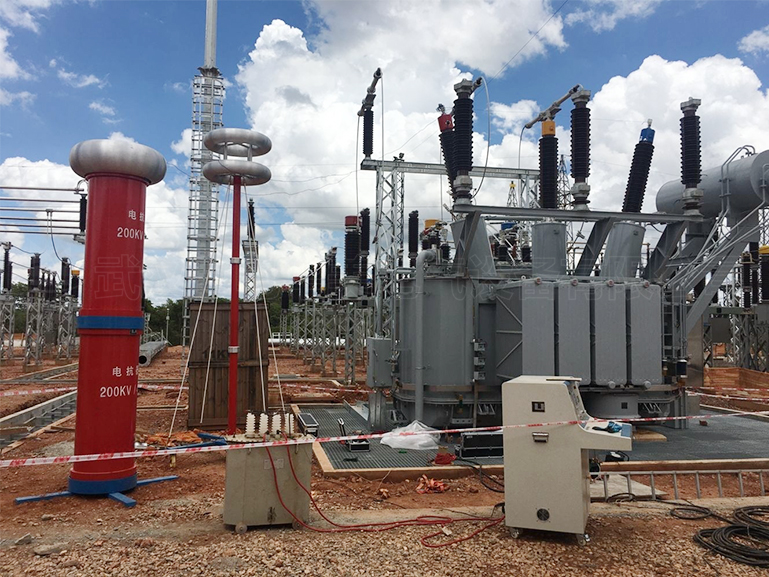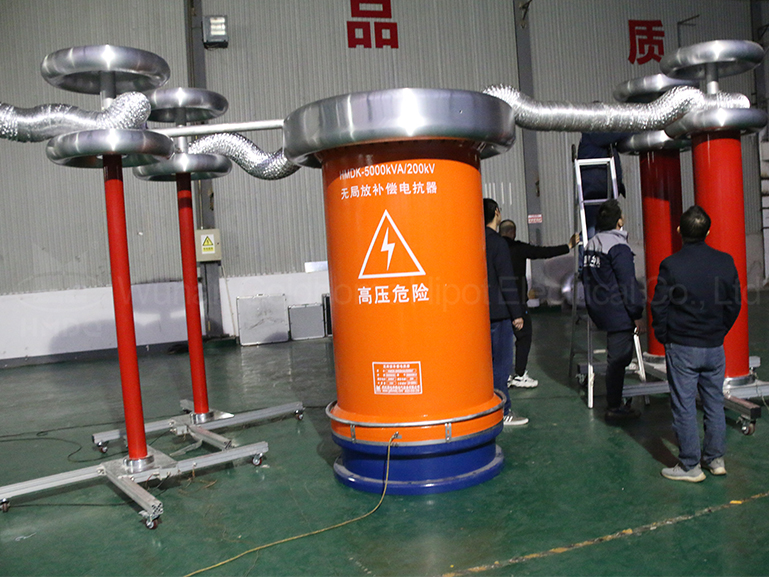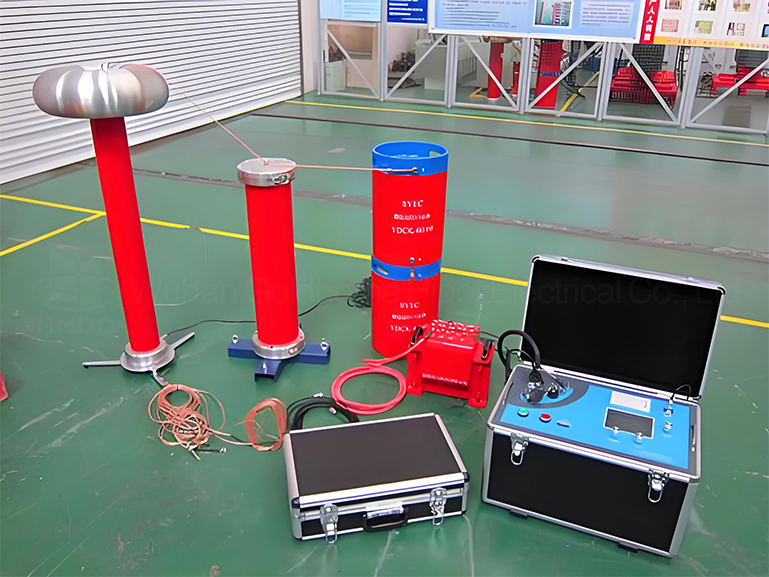Conduct tests on 110kV cables using a Variable Frequency AC Resonant Test System

The Variable Frequency AC Resonant Test System is commonly used for testing high voltage cables like 110kV cables. This test system applies a resonant AC voltage to the cable under test to evaluate its insulation integrity and performance.
To conduct tests on 110kV cables using a Variable Frequency AC Resonant Test System, the following steps are typically followed:
1. Preparation: Ensure that the test system is set up correctly and all safety precautions are in place.
2. Connection: Connect the 110kV cable to the Variable Frequency AC Resonant Test System. Make sure the connections are secure and proper.
3. Test Parameters: Set the test parameters on the test system, including the test voltage, frequency, and duration. For a 110kV cable, the test voltage would be significantly higher than 110kV to ensure the cable can withstand its rated voltage.
4. Excitation: Apply the resonant AC voltage to the cable and monitor its response. The test system will generate a sinusoidal voltage at the resonant frequency to stress the cable's insulation.
5. Measurement: Measure the cable's insulation resistance, capacitance, dissipation factor, and any partial discharge activity during the test. These measurements help evaluate the cable's condition and detect any potential faults.
6. Analysis: Analyze the test results to determine if the cable meets the required standards and specifications. Any abnormalities or failures should be investigated further to identify the root cause.
7. Reporting: Document the test procedure, parameters, results, and any recommendations for maintenance or further testing. A comprehensive test report should be generated for future reference.
In summary, the Variable Frequency AC Resonant Test System is a powerful tool for testing high voltage cables like 110kV cables. By following the standard testing procedures and best practices, you can ensure the reliability and safety of the cables in your electrical system.
To conduct tests on 110kV cables using a Variable Frequency AC Resonant Test System, the following steps are typically followed:
1. Preparation: Ensure that the test system is set up correctly and all safety precautions are in place.
2. Connection: Connect the 110kV cable to the Variable Frequency AC Resonant Test System. Make sure the connections are secure and proper.
3. Test Parameters: Set the test parameters on the test system, including the test voltage, frequency, and duration. For a 110kV cable, the test voltage would be significantly higher than 110kV to ensure the cable can withstand its rated voltage.
4. Excitation: Apply the resonant AC voltage to the cable and monitor its response. The test system will generate a sinusoidal voltage at the resonant frequency to stress the cable's insulation.
5. Measurement: Measure the cable's insulation resistance, capacitance, dissipation factor, and any partial discharge activity during the test. These measurements help evaluate the cable's condition and detect any potential faults.
6. Analysis: Analyze the test results to determine if the cable meets the required standards and specifications. Any abnormalities or failures should be investigated further to identify the root cause.
7. Reporting: Document the test procedure, parameters, results, and any recommendations for maintenance or further testing. A comprehensive test report should be generated for future reference.
In summary, the Variable Frequency AC Resonant Test System is a powerful tool for testing high voltage cables like 110kV cables. By following the standard testing procedures and best practices, you can ensure the reliability and safety of the cables in your electrical system.



